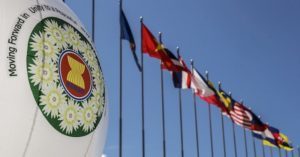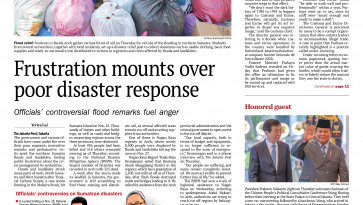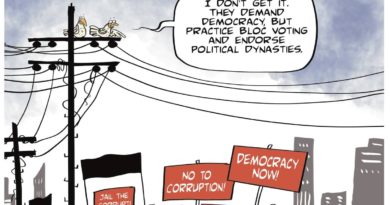ASEAN BIZ-MANUFACTURING: Manila – Philippines manufacturing sector lodges 2nd best performance in ASEAN in May
 MANILA, Philippines — Manufacturing conditions in ASEAN improved in May despite persisting cost inflation pressures, with Philippine factories registering the second best performance in the region during the month, according to the latest results of the Nikkei ASEAN Manufacturing Purchasing Managers’ Index (PMI).
MANILA, Philippines — Manufacturing conditions in ASEAN improved in May despite persisting cost inflation pressures, with Philippine factories registering the second best performance in the region during the month, according to the latest results of the Nikkei ASEAN Manufacturing Purchasing Managers’ Index (PMI).
The headline PMI for Southeast Asia rose to 51.5 in May from 51 in April, the fifth monthly improvement in the health of the region’s manufacturing sector for the year.
The headline PMI is a composite index based on five key indicators: new orders, output, employment, suppliers’ delivery times, and inventories of inputs. It was designed to provide a quick review of the performance of the manufacturing sector each month. A reading of above 50 indicates expansion while a reading below this points to a contraction.
Data for May showed six of the seven countries covered by the survey registered improvement in manufacturing conditions as faster increases in output and new orders were seen.
.
Vietnam registered the best improvement during the month with a faster reading of 53.9 in May. The Philippines followed suit with a PMI reading of 53.7, also a solid increase from April.
Singapore, Myanmar, Indonesia, and Thailand all registered readings of above 50. Malaysia registered a reading of 47.6, which is within contraction territory.
Faster increases in new orders encouraged manufacturers across the region to scale up production, said IHS Markit, the firm that compiled data for the PMI.
Jobs growth, however, was minimal despite higher client demand as there were signs of spare capacity.
In response to increased production requirements, input purchasing picked up during the month. Increased appetite for inputs, however, continue to strain supply chains as indicated by longer times it took suppliers to deliver.
Purchasing managers in ASEAN also reported higher input prices, with the Philippines continuing to report the steepest rate of cost inflation. As a result, firms continued to pass on the higher costs to consumers, with the Philippines reporting the largest increase in factory gate prices.
IHS Markit principal economist Bernard Aw said higher prices for raw materials, especially oil and metal, as well as global shortages, continued to push manufacturing cost higher.
“In some cases, in particular the Philippines and Indonesia, a weaker exchange rate aggravated imported inflation,” he said.
Aw said firms are under a lot of pressure to protect profit margins as the modest increase in demand indicate they are already reaching a limit on passing increased cost to consumers.
“While demand is improving, it remained fairly modest, which meant companies faced constraints with regard to the extent that they could pass on these increased costs to customers. As a result, profit margins remained under pressure,” he said.
“Clearly aware that inflation is mostly external-driven, while domestic economic activity still requires policy support, central banks across the region are in a bit of a bind when it comes to policy direction. Although two regional central banks have recently hiked key interest rates, it is unlikely to be the start of a policy-tightening trend, at least until growth momentum gains a stronger footing,” he added. / Czeriza Valencia (The Philippine Star) – June 5, 2018 – 12:00am / All photographs, news, editorials, opinions, information, data, others have been taken from the Internet ..aseanews.net | [email protected] | For comments, Email to : Pahulu Gan – Contributor | [email protected] .









